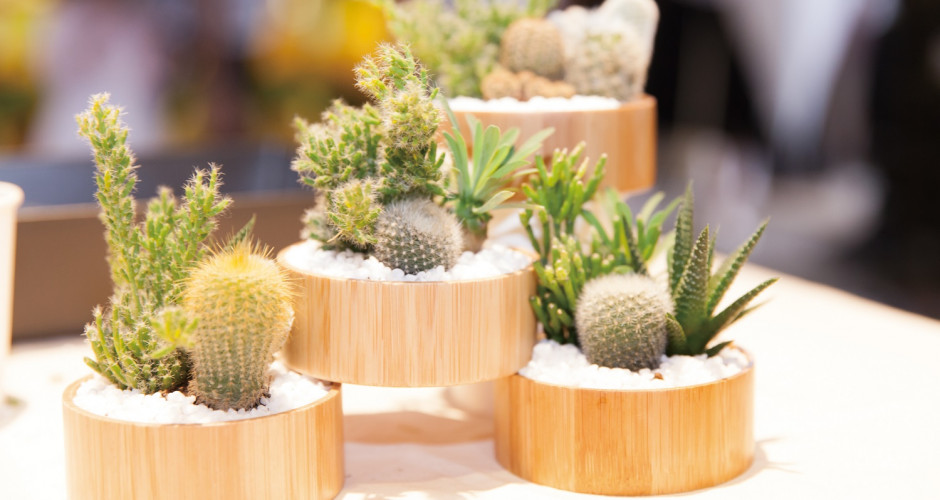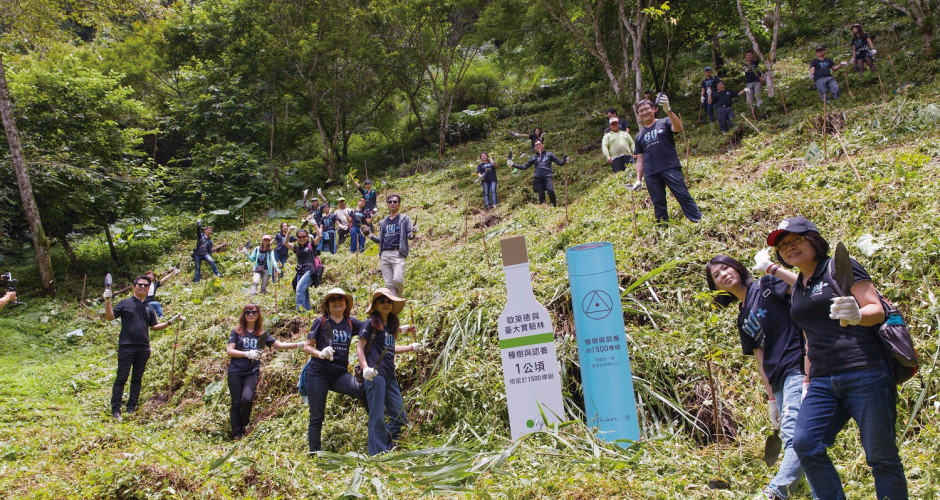An eco-friendly feast for the soul: Breathing new life into junk! Living a convenient modern lifestyle means that mass production and consumption is a part of social development. According to statistics, each day up to 0.8 kg of rubbish per person is produced in Taiwan, which creates a burden that our beautiful island cannot bear. It’s not just the land that is affected, marine ecosystems are also threatened. It has come to the point that in the future there could be more trash in the oceans than fish. As environmental issues become increasingly prominent, most people have made environmental protection and reuse of resources a part of their lifestyle. We can protect the environment in many other ways. Use your imagination and turn recycled goods into visual arts. Behind each art reveals the artist’s perspectives towards environmental issues. There you’ll have a feast for the eyes and the soul!
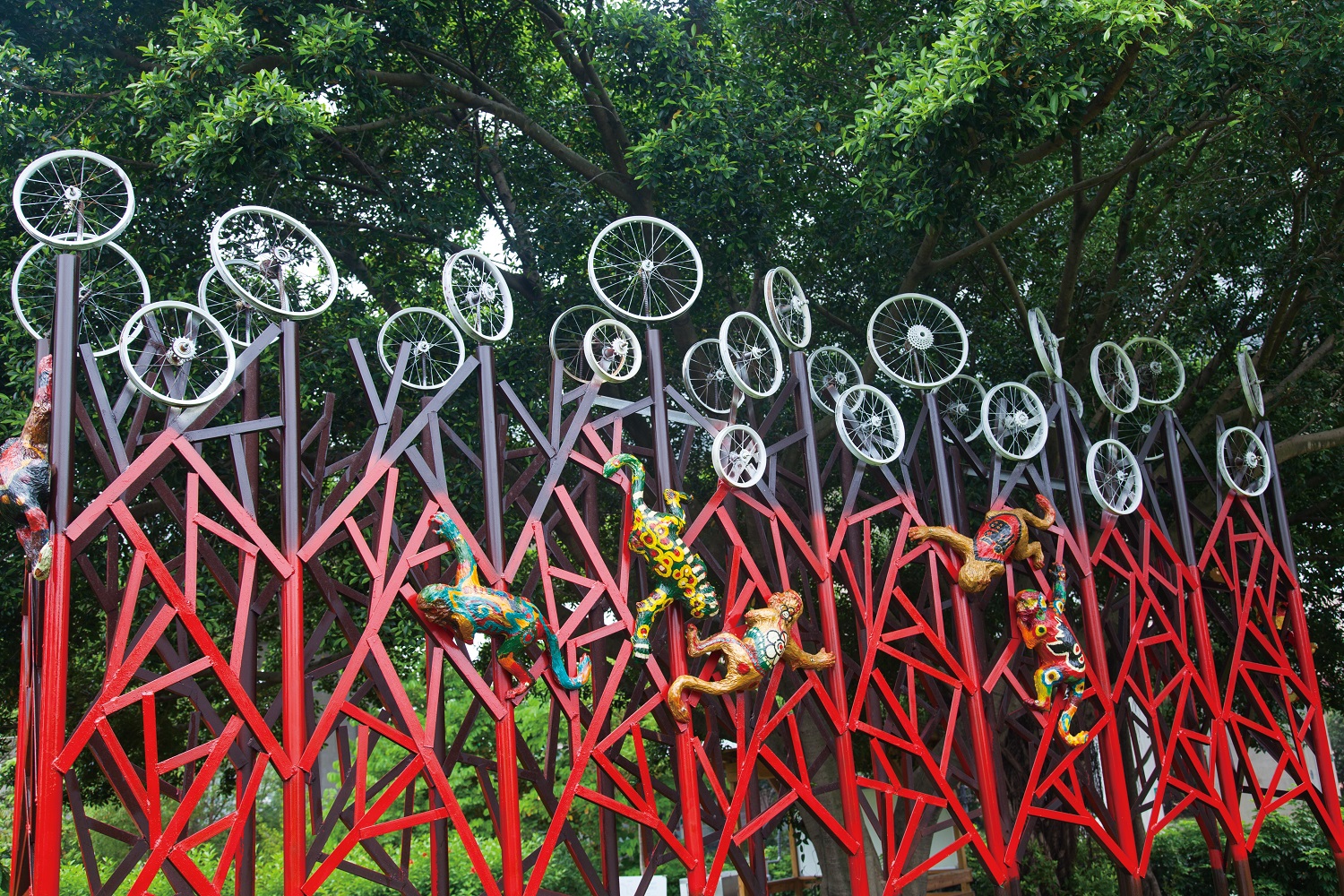
Photo /// The Monkey and Flowers (Feng Hou Tan Hua) by Li Ming-Xian
Eco-art: Breathing New Life into Junk
Art made from junk is nothing unusual. Back in 2005, Taichung artists began turning recycled wastes into eco-art. The Federation of International Tsai-Mo Artists (FITMA) President Huang Chao-Hu came up with the new term “eco-art.” Moreover, nearly 100 eco-artworks by artists from over 20 countries were exhibited at the Taichung City Government Environmental Protection Bureau Po Lin Waste Furniture Reclamation Center. Ecoart is created by breathing new life into recycled waste and turning them into something completely new and meaningful. In 2011, Chao-Hu founded the Taichung Environmental Protection Arts Festival, which has entertained everyone with different themes for the past 5 years.
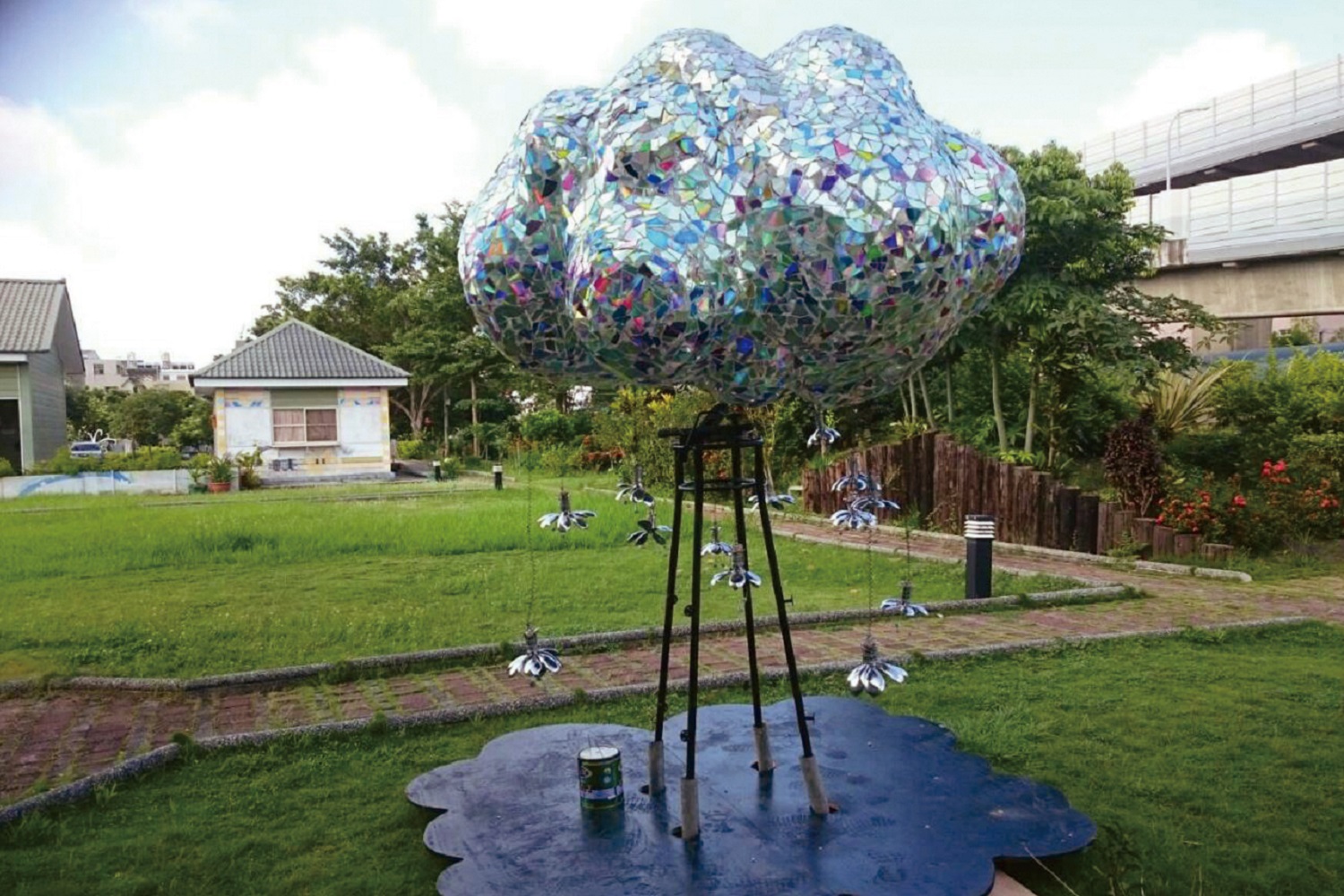
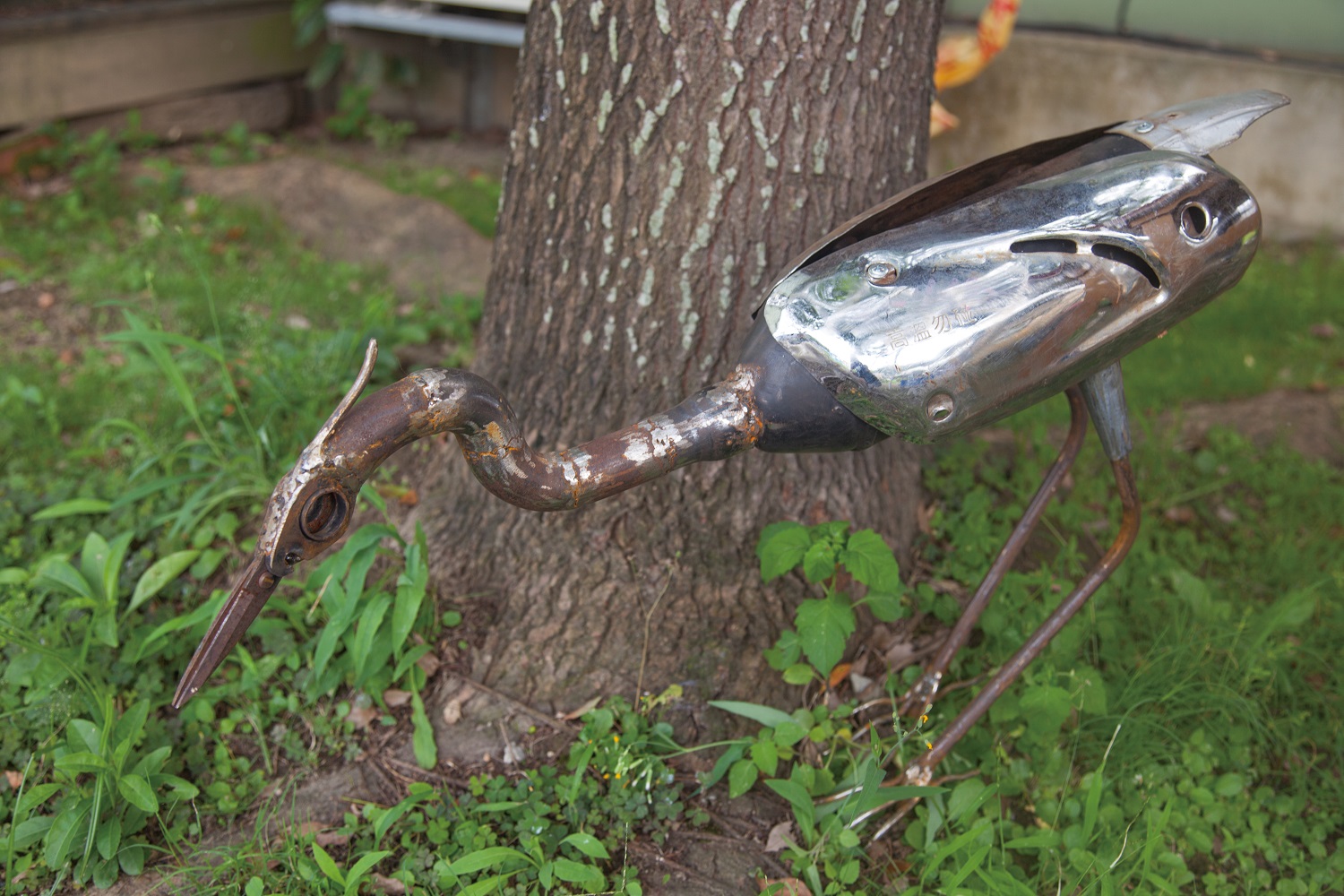
Photo /// Flower Rain by Huang Teng-Xuan; A little egret made from scissors and automobile exhaust pipes.
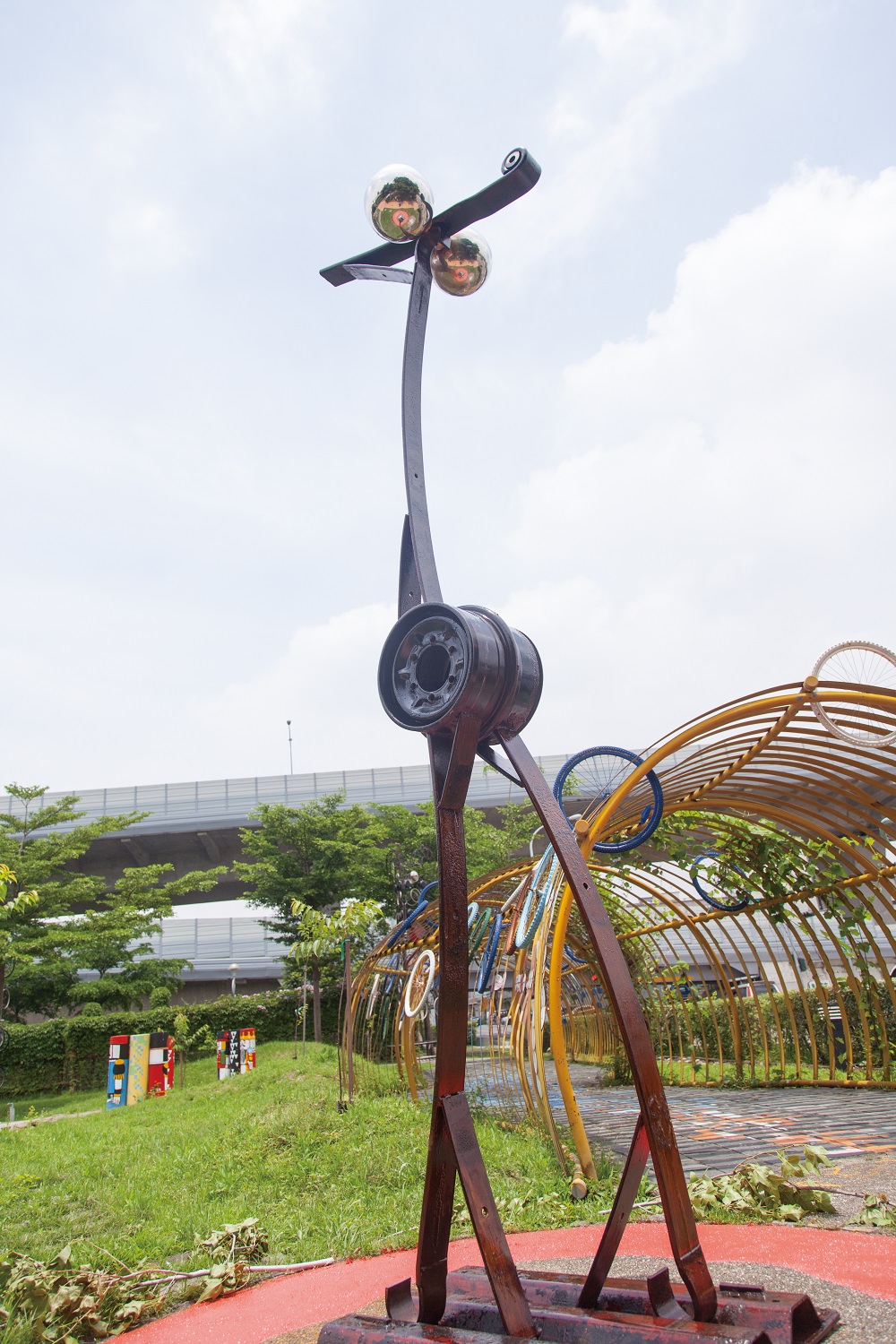
Flowers and Birds Creative Show
In light of the 2018 Taichung World Flora Exposition, the theme for the Taichung Environmental Protection Arts Festival this year is Flowers and Birds Creative Show. At the festival, 15 artists and 4 instructors were invited to teach students how to make their own eco-artworks with recycled wastes such as bicycle rims, fans, chairs, iron pipes, mudguards, and exhaust pipes. Despite the dirty environment of recycling plants and the fact they’re not being paid, artists and students were determined to work hard to depict their environmental values through works of art.
Photo /// Skinny Bird by Ji Xiang
The Essence of Eco-art
Among the artworks displayed in 2016, the largest was Less Exhaust Pipes, More Birds by sculptor Zhang Yu-Wei, who put motorcycle and automobile exhaust pipes, scissors, and other materials together to create a little egret. The beautiful, moving masterpiece reveals the ecological impact of air pollution caused by motorbikes and cars.
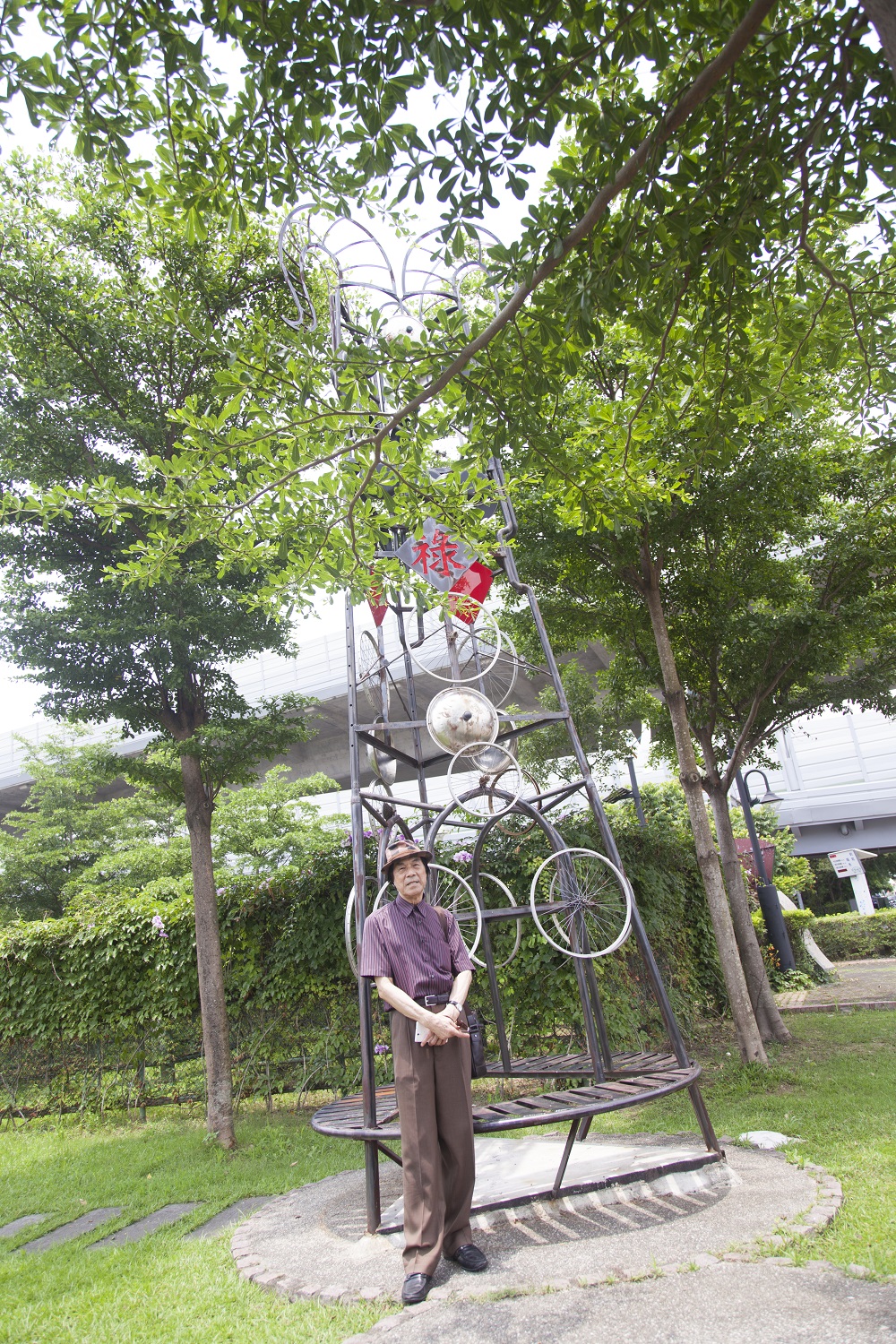
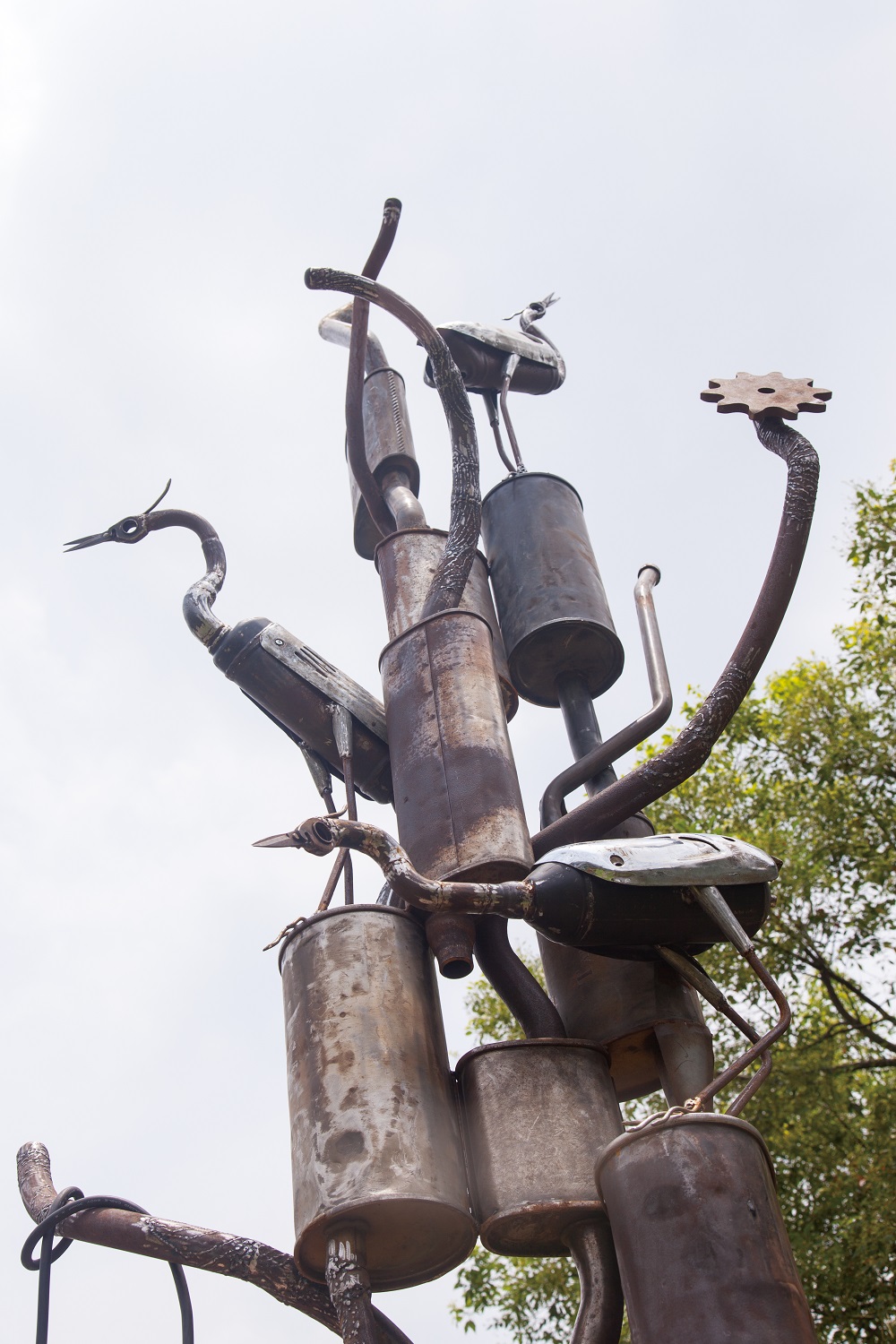
Photo /// Three Goats Embracing Spring by Huang Chao-Hu; Less Exhaust Pipes, More Birds by Zhang Yu-Wei.
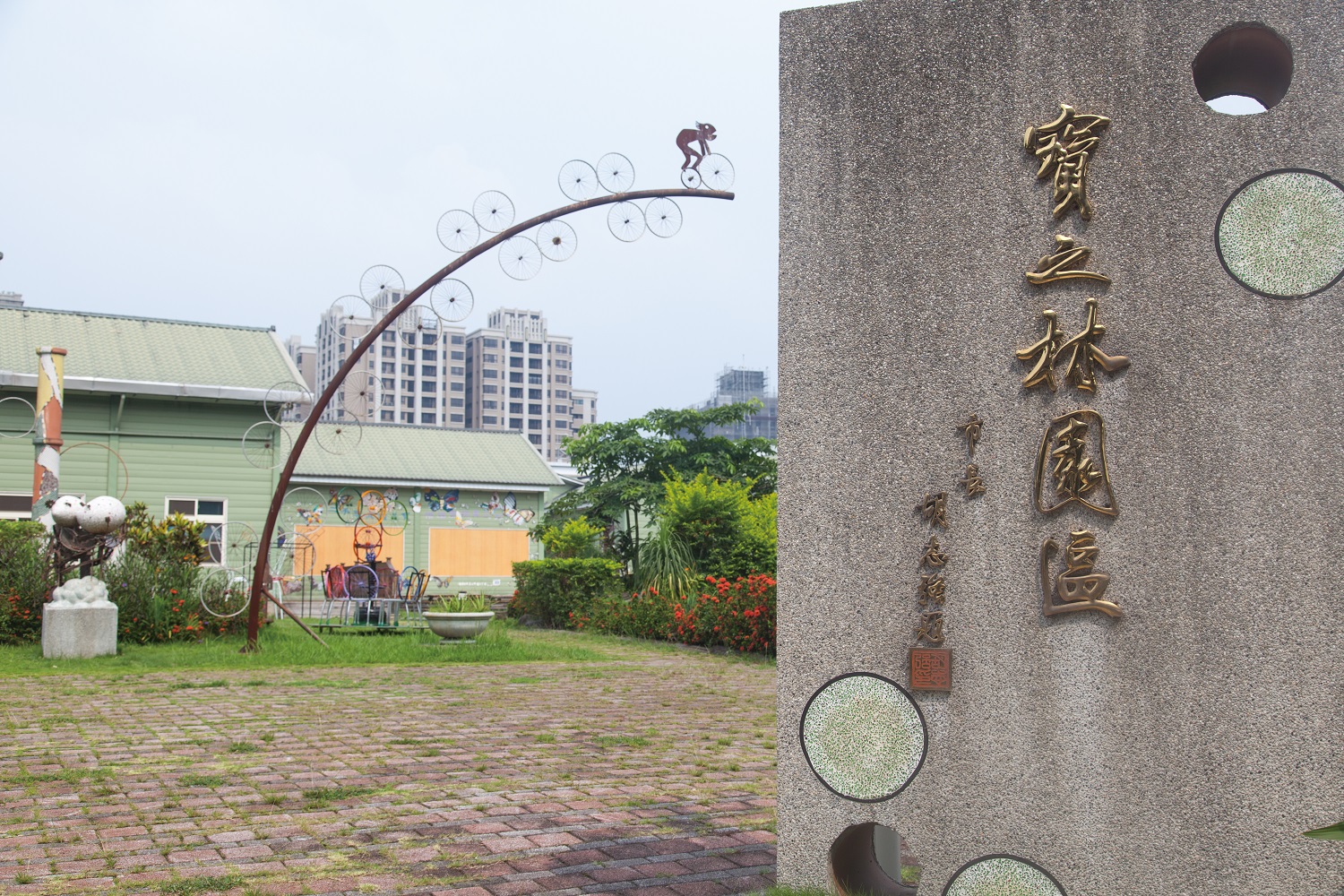
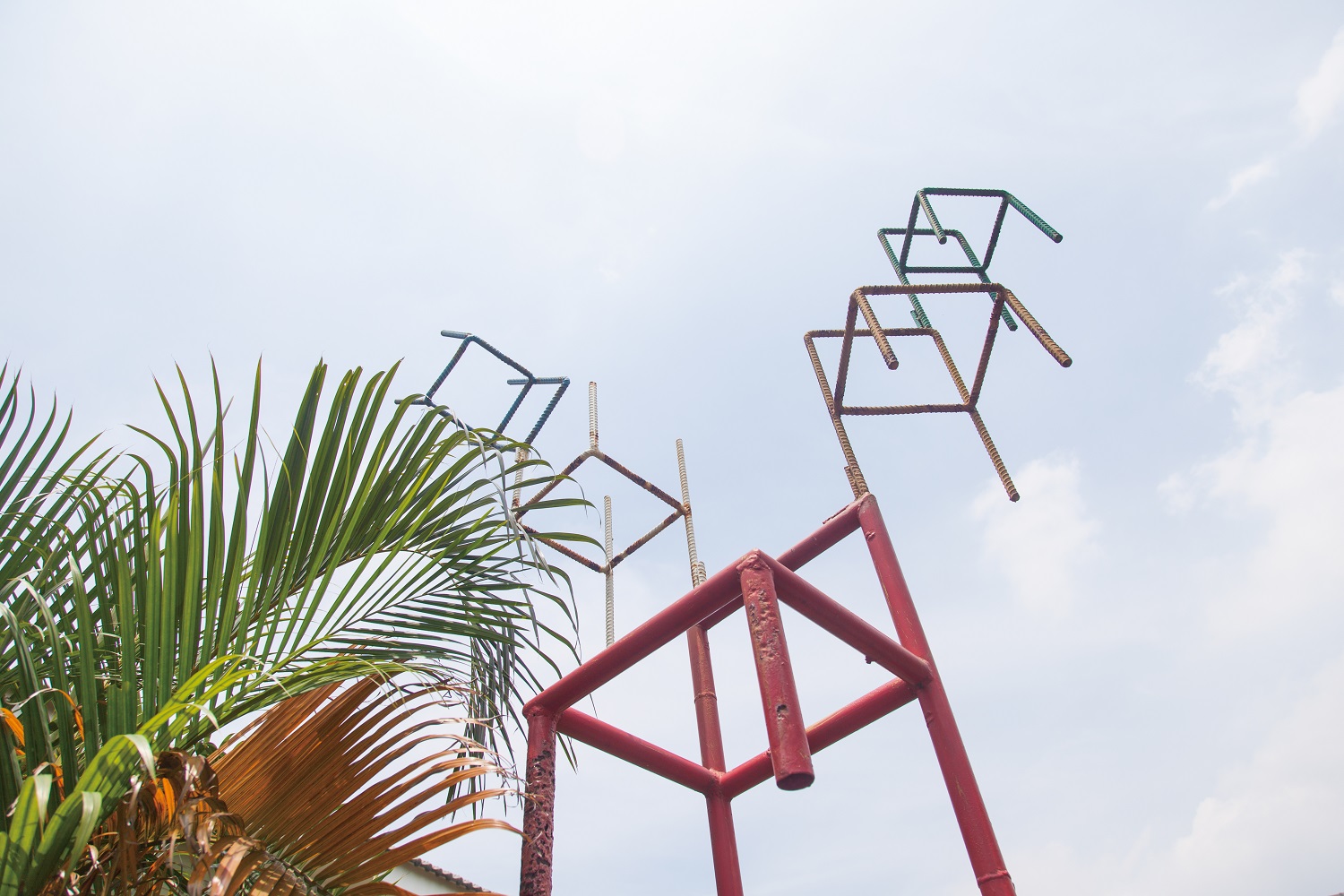
Photo /// Taichung City Government Environmental Protection Bureau Po Lin Waste Furniture Reclamation Center
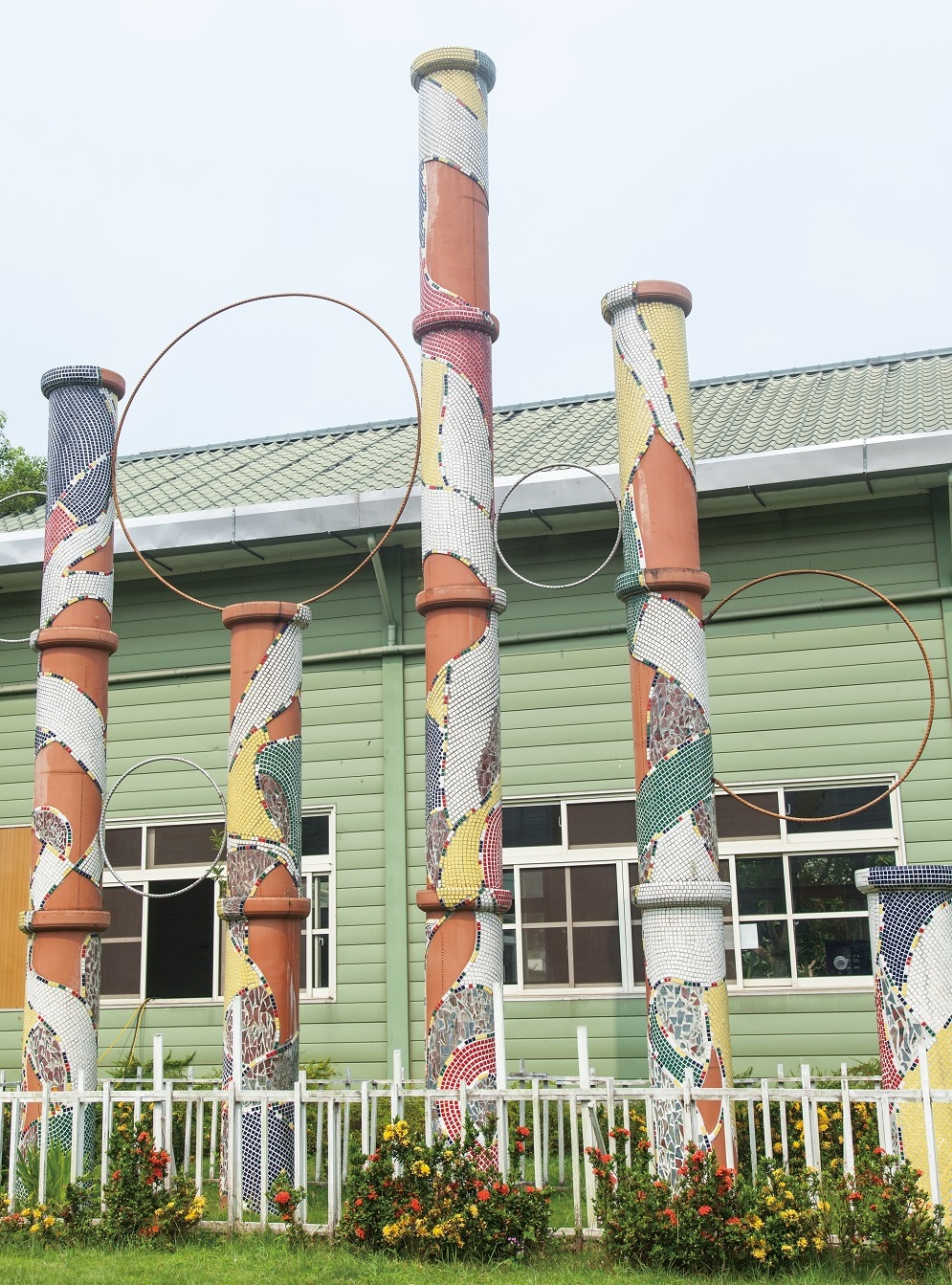
Photo /// An eco-art called New Life
The arts festival doesn’t only feature large works. Many artists used simple materials and lines to create meaningful, artistic artworks. Chen Jin-Wang’s Soar, made from automobile and bicycle parts in June, was inspired by the graduation season to encourage newly graduated students to find their own paths to careers. The amount of materials used for ecoartworks reveal the harsh reality of how much trash is produced. While we are basking in the comfort of a prosperous lifestyle, the earth is suffering.
Artists at Heart
Eco-art reflects natural aesthetics and affections in a way that is no less significant than public art. Ecoart can be made from any sort of material you find in daily life. You don’t need to be a professional artist; everyone and anyone can be an artist as long as you put your heart into it. Turn trash into pieces and pieces of creativity and spice up your life and green up your environment. Breathe new life into wastes and make “going green” cool and exciting and a beauty that shines from the heart.
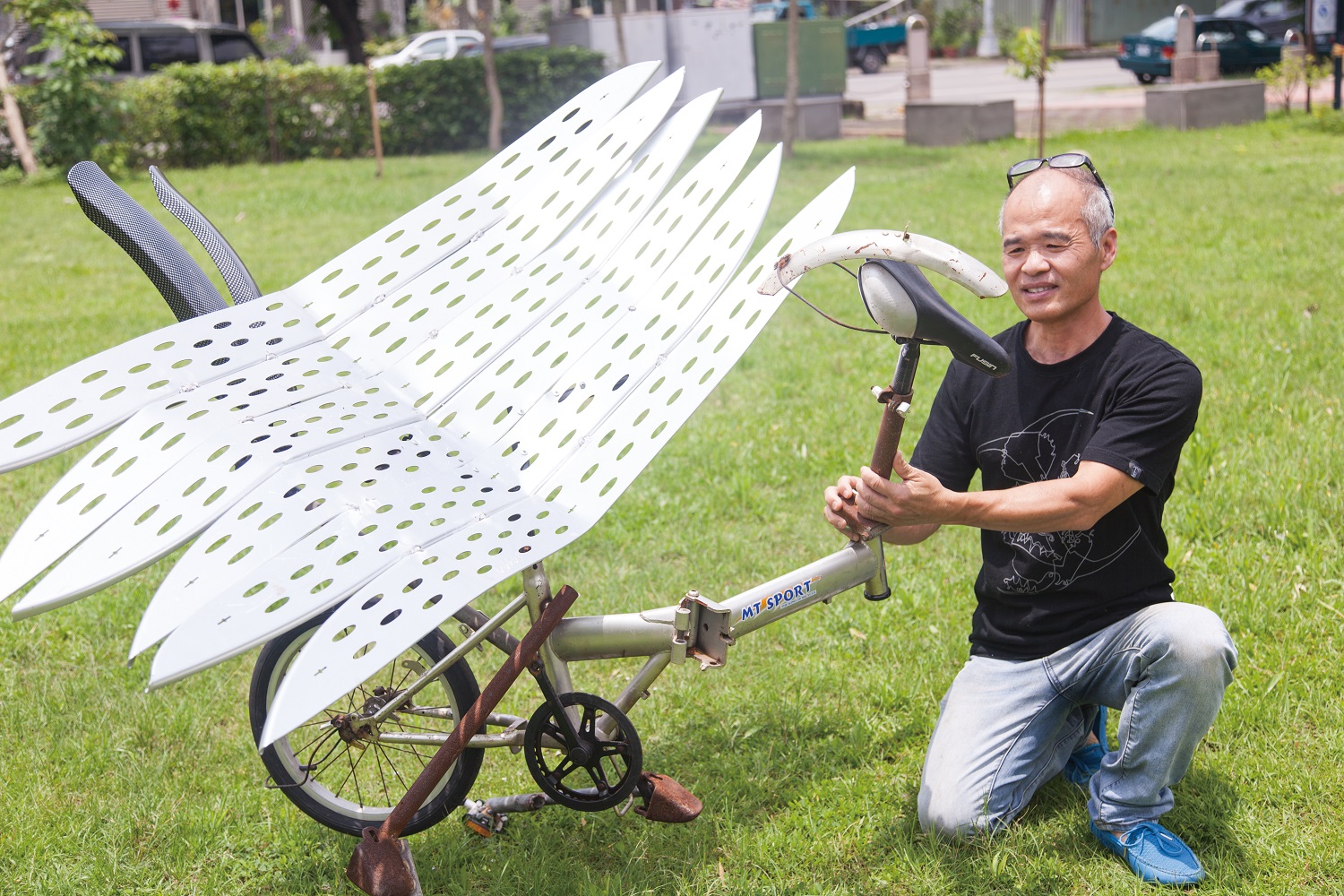
Photo /// 0 Soar by Chen Jin-Wang
Artists Zhuang Lian-Dong, Zhong Jun-Xiong, Huang Ying-Pu, Li Ming-Xian, Lin Shan-Ying, Jian Yuan-Zhong, Qiu Tai-Yang, Liao Ying-Xi, Ji Xiang, Zhong Bin-Xiao, Xiao Xi, Jiang Yu-Lang, Chen Jin-Wang, Zhu Zhong-Yong, Xie Wan-Ni, Zhuang Ming-Zhong, Zhang Yu-Wei, Ge Ying-Hui, Huang Teng-Xuan, and students from National Taiwan Normal University, Department of Fine Arts of National Taichung University of Education, Fine Arts Class of National Taichung First Senior High School, and Taichung’s Jen Mei Elementary School.

